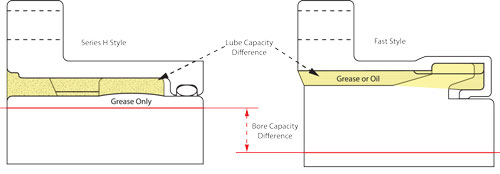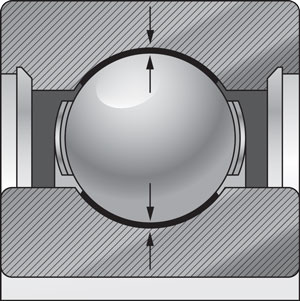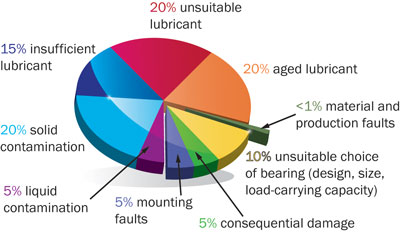http://www.reliableplant.com/Read/28796/do-before-plant-closure
What You Should Do Before a Plant Closure
- Accept the news that your plant is facing an impending plant shutdown. It is not necessarily a “knockout” for the plant or your career. Remember, in the often uneven battleground called the global marketplace, just about anything can happen. Be ready to get up and start fighting again.
- Designate responsibility to an individual for writing a list of possible scenarios. The individual should have enough clout to implement the chosen strategy, if necessary.
- Go to the top of the company and request that sufficient funds be made available to execute the initial shutdown and preservation strategy.
- Choose the right type of long-term equipment caretakers. Those selected are often security or ex-supervisory types rather than experienced operator/craftsmen with intimate knowledge of the equipment.
- Don’t allow critical components to be pirated (stolen for use elsewhere) if part of a larger plant.
- Remove all process materials. Even innocuous materials left in the unit in the long term will likely cost five times more than at the initial shutdown. The current operations people are familiar with all the hazards.
- Seek expert advice on equipment preservation resulting in not getting the best bang for the buck.
- Involve the hourly workforce in the shutdown and mothball plan. Almost unbelievably, our recent experience has been that if the decision to shut down at some future date has been made, then involving operators and mechanics can very much improve both the quality of the shutdown plan and its execution.
- Not only record but clearly and physically mark what has been done to preserve the item of equipment during deactivation. The reactivating crew (probably a different group of people) can easily miss that a filter, line blind, internal component, etc., has been removed or added with serious consequences at a future start-up.
Just as with any critical situation, a long-term strategic approach coupled with a series of medium-term tactics and detailed plans are needed. You should also consider how long the shutdown is probably going to last (guesstimate) and whether the plant will most likely be restarted, sold as a complete unit or sold piecemeal.
Examine every item or class of equipment individually and write a specific initial storage/mothball technique plus a methodology for ongoing maintenance.
For the purposes of this article, let’s consider an item of equipment or a whole plant that might restart as early as six to nine months but could also be several years.
Unused plants and equipment that are properly prepared for shutdown and left in fairly good condition can retain much of their value. However, if a plant is left “as is” and allowed to deteriorate, as is normally the case, much of it can be fit only as scrap in just a matter of months. Engaging in a well-planned process of deactivation/mothballing can be worthwhile either way, whether it should ever be reactivated or just sold for its second-hand value at some future point.
Materials and Equipment You Will Need
Having a clear view of how the constant foes of galvanic/bio corrosion, mold, mildew, etc., can be mitigated if not defeated is essential. Although much will depend on local conditions, the wetter and colder situations are much more challenging in terms of handling humidity, while blowing dust is an issue for those in the high desert regions. For this article, we will consider a central United States or European location.A useful analogy in developing a strategy is to compare what it takes to maintain fire. In the case of fire, there are three essential legs: heat, a fuel source and oxygen. Likewise, age-related deterioration involves a driving force (such as galvanic action), a conducting medium (electrolyte) and oxygen. The fundamental approach to stopping or slowing this age-related deterioration is to remove one or more of the three legs.
In simple terms, we aim to do the following:
- Separate dissimilar metals.
- Protect surfaces that could be attacked, even with a covering of only a few molecules thick.
- Dry out or remove the conducting medium (electrolyte — air or gas). Corrosion cannot occur when parts are stored in environments where the relative humidity is held below 40 percent.
- Remove any oxygen or sources of chemical or biological attack.
- Liquid protective waxes and liquid polyvinyl chloride (PVC) coating — These can be sprayed on any clean, dry surface to protect them. Wherever it is applied, PVC will form a tough, flexible, waterproof skin that will withstand the extremes of temperature, thermal shock, differential substrate movement and impingement even when sprayed on webbing to form a cocoon.
- Volatile corrosion inhibitors (VCIs) — These generate protective vapors even at room temperatures. They come in a number of convenient forms, including time-release vaporizers, sprays, plastic bags and films, powders, oil additives and coatings. They are adsorbed onto the metallic surfaces of the equipment (just a few molecules thick), where they can prevent corrosion for up to two years. While most VCIs are environmentally friendly and create no safety hazards for employees, there are some that are suspected of being harmful. Most contain no toxic substances, such as nitrates or chromates. (Note: Volatile organic compounds should not be used in combination with a desiccant.)
- Vapor space inhibitor (VSI) — This is an oily concentrate that can be added to lubricating oil systems (internal combustion engines, etc.) when equipment is not going to be completely filled.
- Heat-shrinkable plastic films — These are ideal for enclosing individual machines that have been cleaned and dried and have internal desiccants added.
- VCI-covered polythene films — These are used to wrap individual smaller components.
- Chemical oxygen scavengers — These are frequently added to fresh water used to displace more corrosive liquid in systems that can’t be effectively cleaned or dried out.
- Chemical inhibitors — These are added to liquids and chemicals and are designed to remove unwanted products while preferentially inhibiting their attack on the body of the container. (Antifreeze sometimes used in this process contains them.)
- Desiccants — These include numerous substances (solids) that absorb water from gases (air) or liquids.
- Biocides — These are used to prevent microbial growths in water and fuels such as gasoline and diesel fuel.
- Light waxes — These are used as surface protectors for metals.
- Sacrificial Anodes — These are used in tanks that cannot be drained of their contents.







